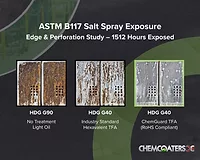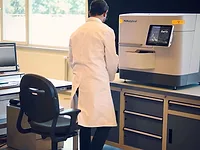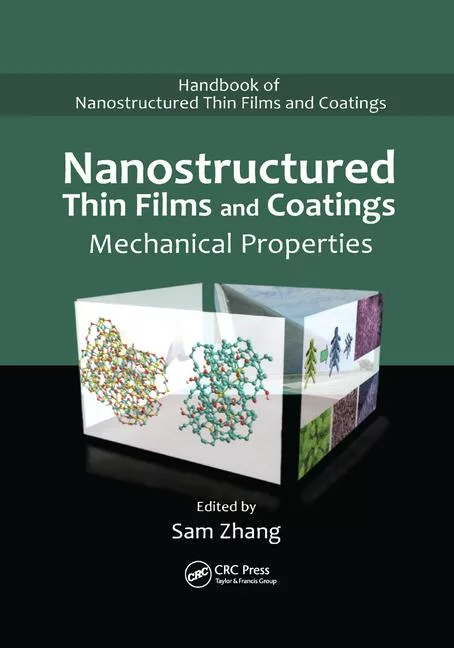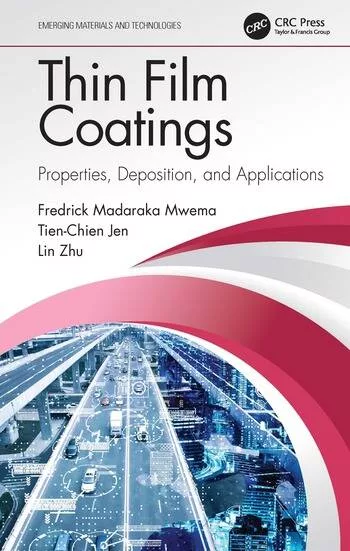Micro-Thin Clear Coating Provides Properties Similar to Hardened Glass
Recently, a new micro-thin clear coating has been introduced that promises to expand the range of applications and improve the performance of factory finishes and industrial coatings.
The life of factory-applied coatings is basically fixed at the time of application. Material composition, surface preparation, coating formulation and application are all components of service life. The most popular exception to limited service life for factory coatings is the automobile. Regular washing, the use of quality waxes and polishes, and garage parking can provide a significant increase in service life by reducing or eliminating many of the conditions that damage OEM coatings.
Recently, a new micro-thin clear coating from Germany, called Permanon, has been introduced in America that promises to expand the range of applications and improve the performance of factory finishes and industrial coatings.
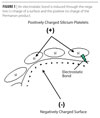
All manufactured materials, including coatings, contain microscopic peaks and valleys like the contour of a mountain range. These irregularities are known capillary structures. Contaminants such as fine dirt, minerals and pollutants are drawn into these voids where they are extremely hard to remove. Capillaries also provide germs an excellent place to grow and multiply.
Permanon’s silicium particles are laminar shaped. This means they overlap each other like the scales of a fish. The silicium platelets are attracted to the capillary wall by electrostatic bonding. The electrostatic bond is produced by the positive charge of the Permanon coating and the negative charge of the host surface (Figure 1). Since there is no water- or solvent-based vehicle in Permanon, no reaction or cure time is required. As soon as the silicium particles come in contact with a surface, the application process is complete.

Permanon produces a hydrophobic surface, or a surface that repels moisture. The potential of a surface to absorb or repel moisture is based on many factors, including temperature, humidity and static electricity. Also, surface condition is a major factor. The rougher the surface the higher the attraction or spreading rate for water; the smoother the surface the more repellent it is to moisture.
Using ASTM F-2202, Standard Test Method for Hydrophobic Surface Films by the Water Break Test, allows users to easily check Permanon’s performance. By using an inexpensive spray bottle filled with distilled water and spraying water on the treated surface, the formation of large, closely spaced droplets indicates that moisture is being prevented from being absorbed into the surface profile. The size, shape and height of the water droplets are measured by their contact angle. Contact angle is measured by a straight line that starts at the base of the droplet and travels in a straight line along its outer surface to the break off point. The measurement between this line and the surface determines contact angle When Permanon is applied to a clean, hard surface, a contact angle measurement of 160º is possible. This means that the treated surface is highly repellent to moisture and chemical attack (Figure 2).
Because of the high concentration of acid rain in Europe the new cars became soiled with a mixture of moisture, sulphur-dioxide and nitrogen oxide, which are major components of acid rain. Due to the hydroscopic nature of acid rain, a film of dirt, dust and other contaminants began to build up on the car’s new finish. When the new cars were finally delivered, they were in such a filthy condition that they required extra cleaning before they could be shown to potential customers. This resulted in additional cost for the dealers.
The goal of the trial study was to establish the savings produced by Permanon. The study found that Permanon protected new car finishes against aggressive contaminants and prevented acid rain damage while new cars were being stored and during transport to showrooms, resulting in major dealer savings.
This is just one example of the many advantages for Permanon applications for manufactured products. First, OEM finishes will never be cleaner and in better condition than when in the factory environment. The installment of Permanon at this point would provide several major advantages to dealers, distributors and potential new customers.
The auto industry is not the only industry that would benefit from the Permanon preservation program. Other markets available include aircraft, boats, trucks, trailers, construction equipment, farm equipment, appliances, recreation items, or virtually any hard surface for residential, commercial or industrial use.
The life of factory-applied coatings is basically fixed at the time of application. Material composition, surface preparation, coating formulation and application are all components of service life. The most popular exception to limited service life for factory coatings is the automobile. Regular washing, the use of quality waxes and polishes, and garage parking can provide a significant increase in service life by reducing or eliminating many of the conditions that damage OEM coatings.
Recently, a new micro-thin clear coating from Germany, called Permanon, has been introduced in America that promises to expand the range of applications and improve the performance of factory finishes and industrial coatings.

How Permanon Works
Permanon has been designed to enhance the appearance and increase the durability of coatings. The main component of Permanon is the inorganic particle silicium Si-14, which is basically a component of glass. When the silicium is processed into nano-sized particles and incorporated into a proprietary water-based polymer solution, it is transformed into a highly effective, micro-thin coating for virtually any hard surface.All manufactured materials, including coatings, contain microscopic peaks and valleys like the contour of a mountain range. These irregularities are known capillary structures. Contaminants such as fine dirt, minerals and pollutants are drawn into these voids where they are extremely hard to remove. Capillaries also provide germs an excellent place to grow and multiply.
Permanon’s silicium particles are laminar shaped. This means they overlap each other like the scales of a fish. The silicium platelets are attracted to the capillary wall by electrostatic bonding. The electrostatic bond is produced by the positive charge of the Permanon coating and the negative charge of the host surface (Figure 1). Since there is no water- or solvent-based vehicle in Permanon, no reaction or cure time is required. As soon as the silicium particles come in contact with a surface, the application process is complete.

Permeability Control
When Permanon is applied to a cleaned surface, the silicium platelets cover the capillary wall and closely follow the contour of its surface. These platelets fill up to 90 percent of this cavity, making the surface smoother and highly resistant to soiling. The overlapping of these platelets also reduces the permeability of the treated surfaces, making it virtually impossible for moisture and other compounds to migrate through the coating to the protected substrate.Permanon produces a hydrophobic surface, or a surface that repels moisture. The potential of a surface to absorb or repel moisture is based on many factors, including temperature, humidity and static electricity. Also, surface condition is a major factor. The rougher the surface the higher the attraction or spreading rate for water; the smoother the surface the more repellent it is to moisture.
Using ASTM F-2202, Standard Test Method for Hydrophobic Surface Films by the Water Break Test, allows users to easily check Permanon’s performance. By using an inexpensive spray bottle filled with distilled water and spraying water on the treated surface, the formation of large, closely spaced droplets indicates that moisture is being prevented from being absorbed into the surface profile. The size, shape and height of the water droplets are measured by their contact angle. Contact angle is measured by a straight line that starts at the base of the droplet and travels in a straight line along its outer surface to the break off point. The measurement between this line and the surface determines contact angle When Permanon is applied to a clean, hard surface, a contact angle measurement of 160º is possible. This means that the treated surface is highly repellent to moisture and chemical attack (Figure 2).
Self-Repair Capabilities
The initial Permanon application lasts up to one year. Re-applications can extend service life indefinitely. During re-application, Permanon silicium nanoparticles will locate damage points, rebond and restore full protective functions. This prevents the trapping of contaminants between coats and the build-up of excessive film thickness over the life of the treatment.Case Study
Recently, a test study was performed in France in an attempt to find a solution to the damage caused by acid rain on automotive finishes. This problem occurred when manufacturers sent new cars to a refinishing center to have the paraffin wax transport protection removed, cleaned and detailed before being sent to area dealers. When the cars were not immediately delivered and left in unprotected parking lots overnight, they were covered in a heavy layer of acid rain fog.Because of the high concentration of acid rain in Europe the new cars became soiled with a mixture of moisture, sulphur-dioxide and nitrogen oxide, which are major components of acid rain. Due to the hydroscopic nature of acid rain, a film of dirt, dust and other contaminants began to build up on the car’s new finish. When the new cars were finally delivered, they were in such a filthy condition that they required extra cleaning before they could be shown to potential customers. This resulted in additional cost for the dealers.
The goal of the trial study was to establish the savings produced by Permanon. The study found that Permanon protected new car finishes against aggressive contaminants and prevented acid rain damage while new cars were being stored and during transport to showrooms, resulting in major dealer savings.
This is just one example of the many advantages for Permanon applications for manufactured products. First, OEM finishes will never be cleaner and in better condition than when in the factory environment. The installment of Permanon at this point would provide several major advantages to dealers, distributors and potential new customers.
The auto industry is not the only industry that would benefit from the Permanon preservation program. Other markets available include aircraft, boats, trucks, trailers, construction equipment, farm equipment, appliances, recreation items, or virtually any hard surface for residential, commercial or industrial use.
Advantages of Permanon
When Permanon is applied to a clean, hard surface, that surface takes on properties that are similar to hardened glass. The coating is chemically inert and will not react with the base material. Following are some advantages that Permanon provides:- Dirt and grime cannot bond to treated surfaces;
- Surfaces are protected against acid rain;
- Airborne dust is repelled;
- Eliminates the need for harsh chemical cleaners;
- Reduces cleaning cost by 50 percent or more;
- When used with lifecycle maintenance programs, substantial saving are achieved;
- Improves the clarity of glass and other transparent materials;
- Resists temperature extremes from 40 ºC to 300 ºC;
- Protects surfaces from UV exposure; and
- Significantly improves the maintainability of coatings.
Conclusion
Based on testing over the last 12 months, Permanon will increase the service life of coatings by 20 to 50 percent when incorporated into a proactive maintenance program – more if applied at the factory. Permanon products contain no VOCs and require no respiratory or personal protection products for mixing or application. The product is non-flammable, non-toxic and is biodegradable. The enhanced appearance and improved condition of high-end durable goods offers a better return on investment for owners.Looking for a reprint of this article?
From high-res PDFs to custom plaques, order your copy today!




